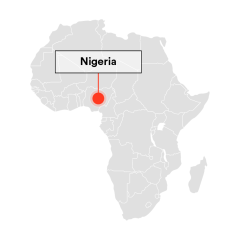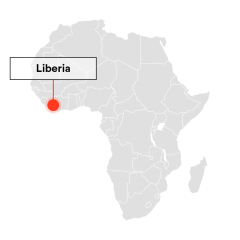Improve VAWG data

Improve VAWG data
Case Studies

The Spotlight Initiative established the first-ever National GBV Data Situation Room and Dashboard, in close collaboration with Nigeria’s Federal Ministry of Women Affairs (FMWA) and other partners. This innovative data management and visualization platform is designed to enable a systematic collation of VAWG cases using a bottom-up approach from the community to national levels. The online reporting platform is a critical component of the initiative, providing timely analytics and real-time visualization of validated administrative data on reported GBV cases in Nigeria.
"Knowing that the data from my organization is being analyzed at the federal level to be used for rapid decision-making and policy formulation has given me fulfillment in my role and contribution to the situation room” - Mr. Damilola Adenusi, M&E officer with Women at Risk International Foundation (WARIF), Lagos State.
Results: Initially launched in the 5+1 Spotlight Initiative supported States in 2020, it has since been scaled up to all 36 states through state Ministries of Women Affairs. This expansion ensures comprehensive national coverage and coordination in the collection and analysis of data on violence against women and girls. As of the latest update (2023), the Situation Room has data on a significant number of cases, including 13,933 reported cases, 432 fatal cases, 731 closed cases, 4,410 open cases, and 33 convicted perpetrators. This improved data collection and analysis capacity is instrumental in helping inform decision-making around national response, prevention strategies and policymaking around violence. It also helps overcome previous challenges of fragmented data reporting tools and poor coordination, ensuring that the government, donors and other stakeholders now have a reliable and centralised reporting system.
Sustainability: The GBV Data Situation Room is anchored within the ministries of women’s affairs at both national and sub-national levels and draws on information from all service providers and civil society organisations that support survivors. The Federal Ministry of Women’s Affairs has galvanised funding from other donors, and taken a leadership role in coordinating the data validity and quality assessment process. This government ownership and ongoing engagement with stakeholders ensures continued support and relevance.



The Safe Mobile App (SAV-APP) aims to improve the ability to report, respond and fast-track cases of violence. Designed primarily for young women between 12 and 24 years, the app not only facilitates timely reporting of incidents but also connects women with medical, counselling, and policy assistance in emergencies. Launched in 2020, the app was developed with the support of the Women’s Peace and Humanitarian Fund under Spotlight Initiative.
"Through Spotlight Initiative, we have seen more women and girls coming up to report cases by themselves." - Inspector Muna Meah, Commander in the Liberia National Police Force, county coordinator for the Women and Children’s Social Protection Centre in Sanniquille, north-central Liberia.
Results: The SAV App has emerged as a critical tool for documenting violence and reaching out to school-aged girls in Liberia, a demographic often faced with multiple forms of abuse who are often hard to reach. Managed by Girls for Change, a women-led community-based organisation, the app’s impact extends beyond reporting and improved data. It fosters engagement with Gender Justice Clubs, male champions, and stakeholders across various counties. The Liberia National Police have observed that the app and associated activities have empowered more women and girls to report cases independently. Community stakeholders have also shared that the app has increased girls’ levels of trust in reporting cases of violence.
Scale-up: The project initially covered four communities in Montserrado, eight in Bomi, and eight in Cape Mount Counties. Following its initial success in these communities, efforts have been made to scale up the app’s usage. The establishment of three sub-national GBV coalitions in Liberia has further strengthened the ability to track, report and follow up on cases, highlighting the app’s potential for broader national impact on addressing violence.







